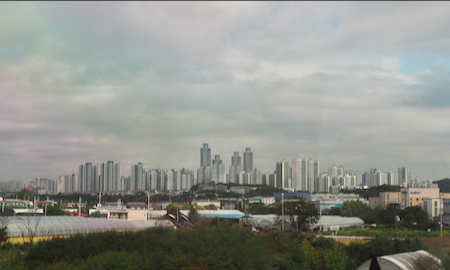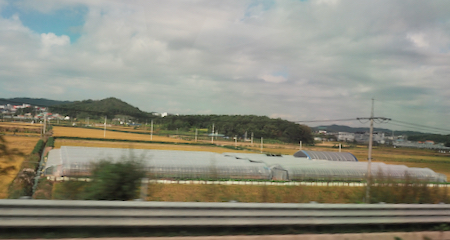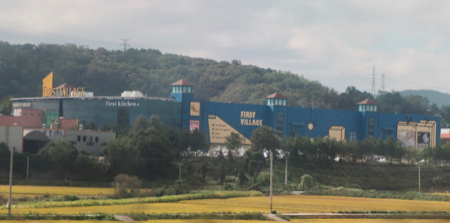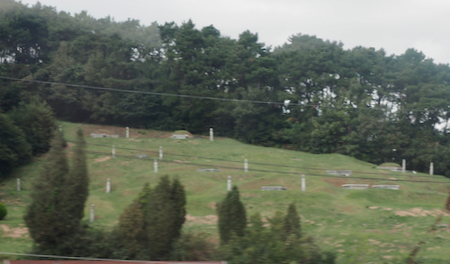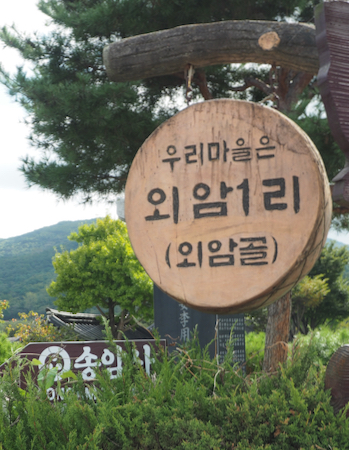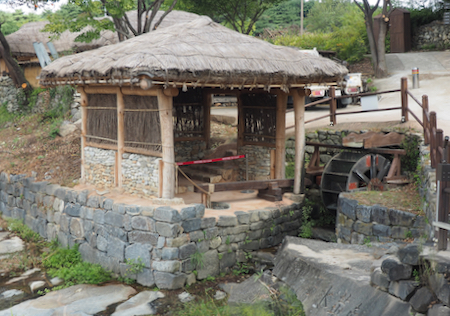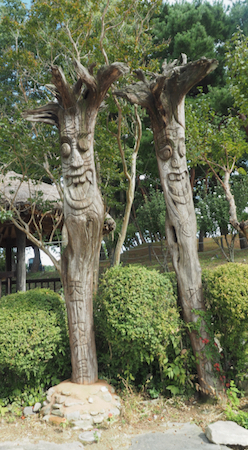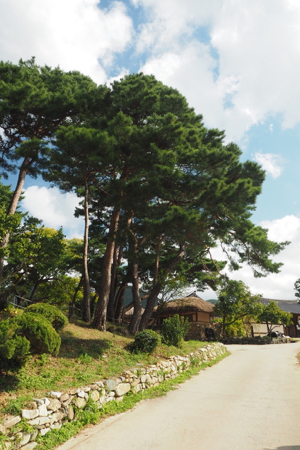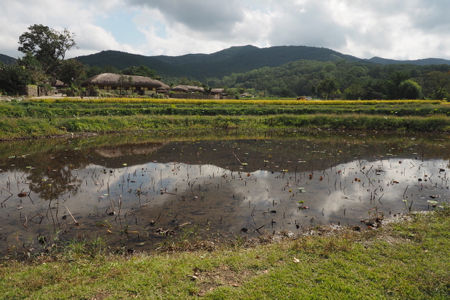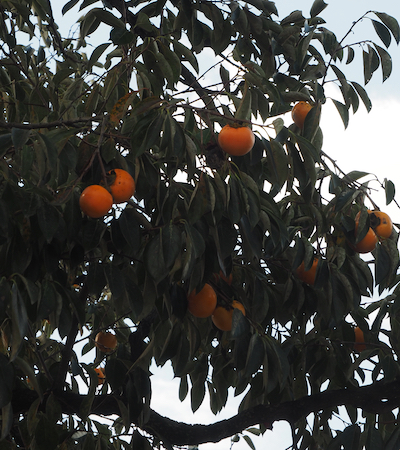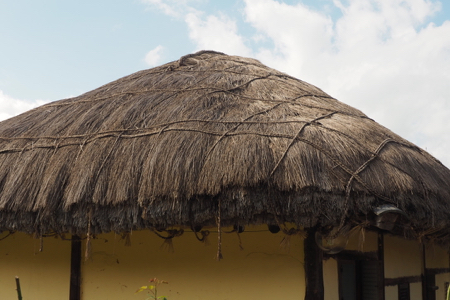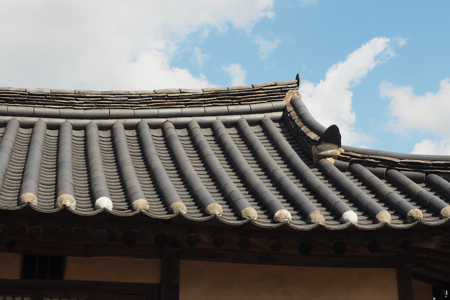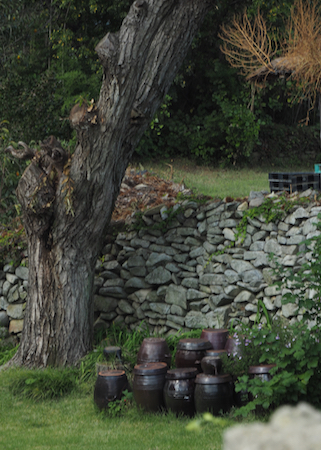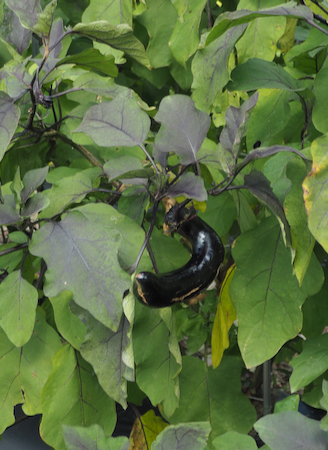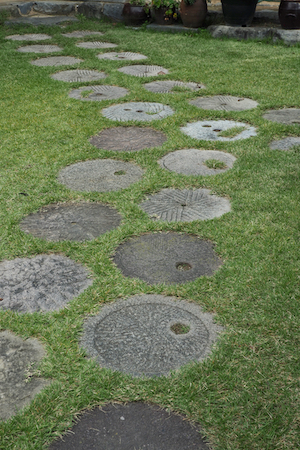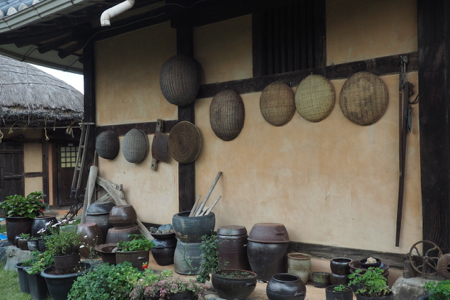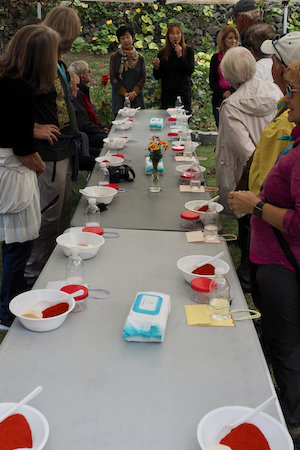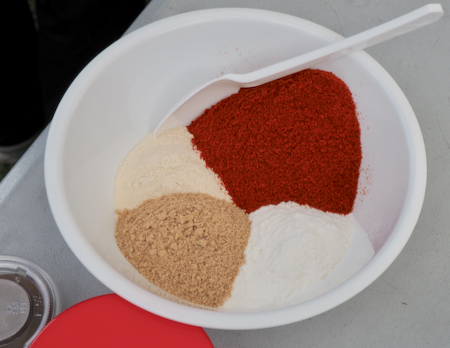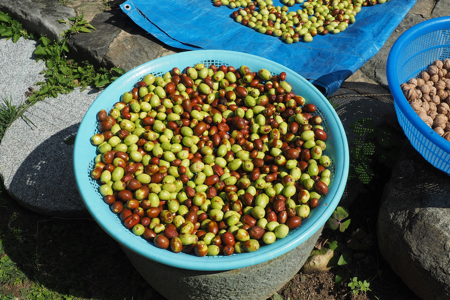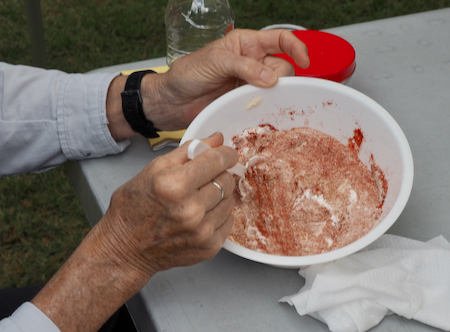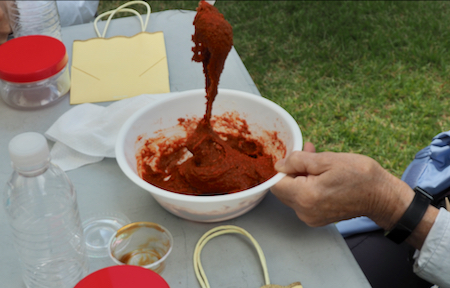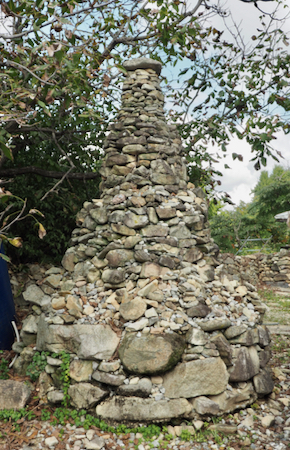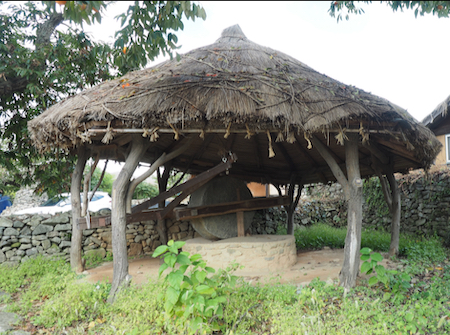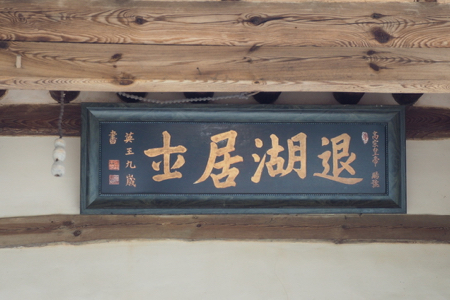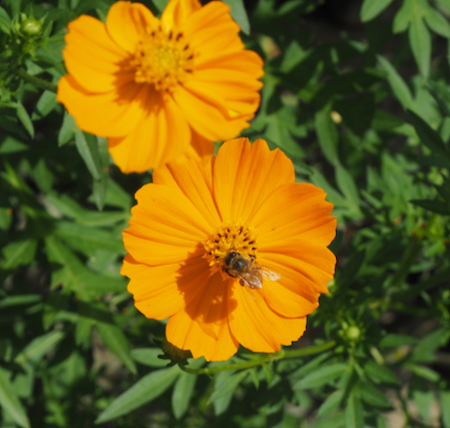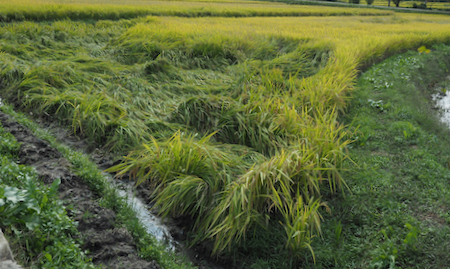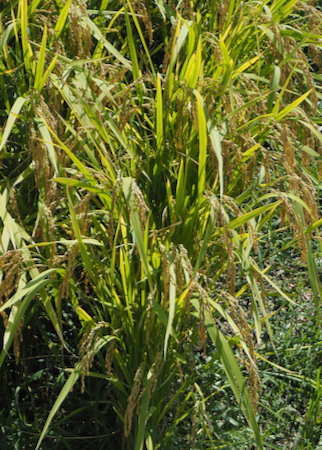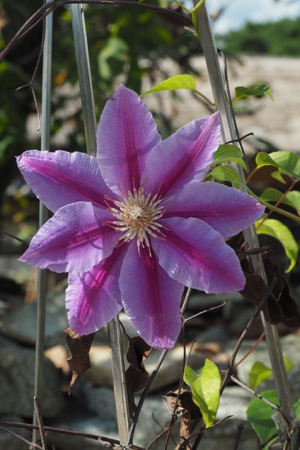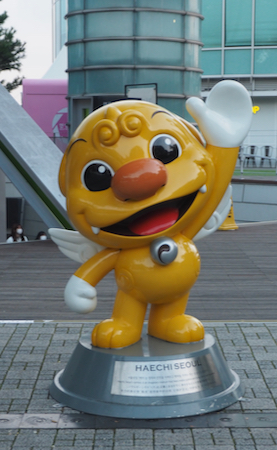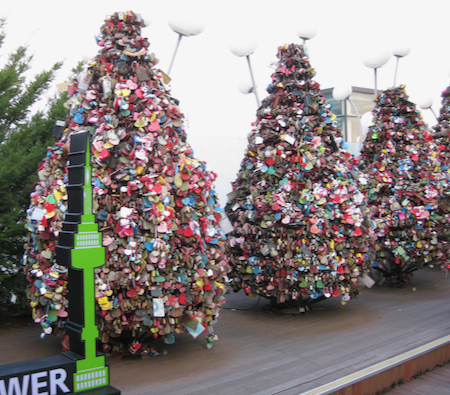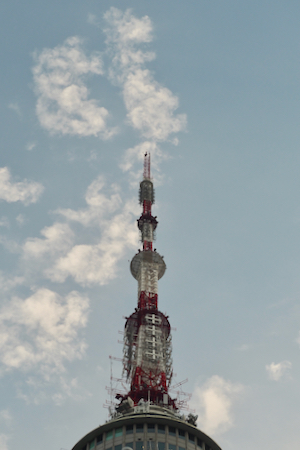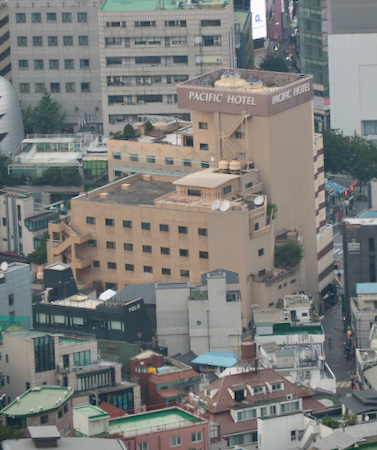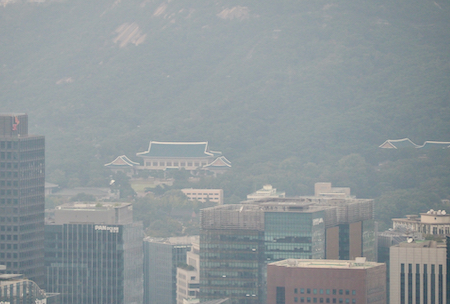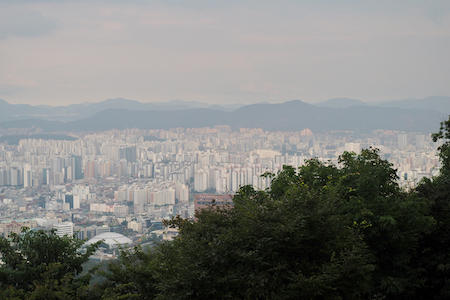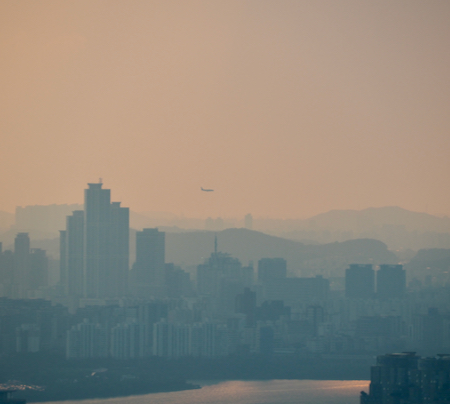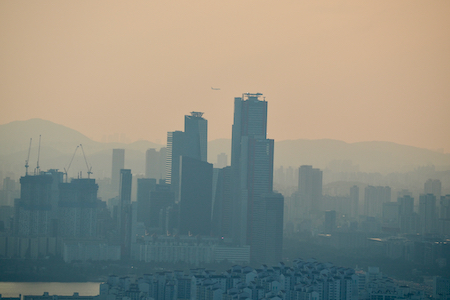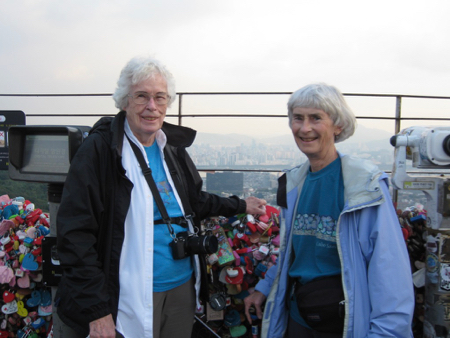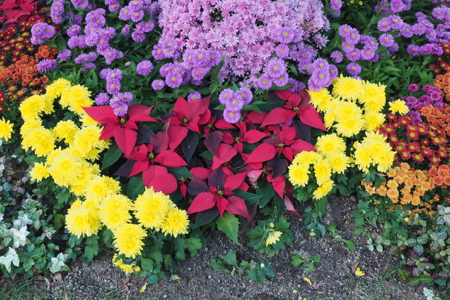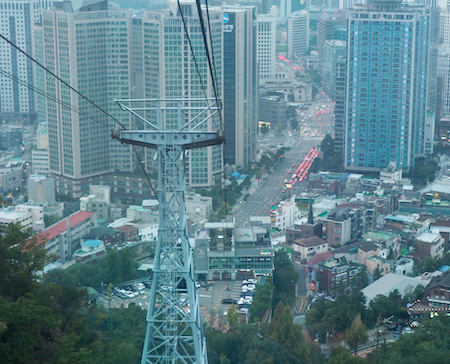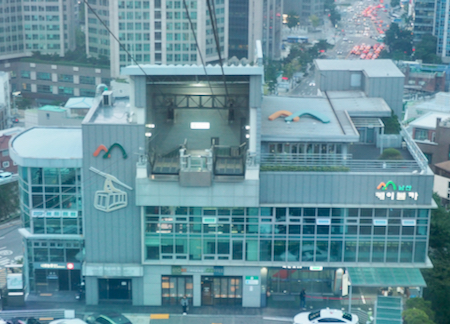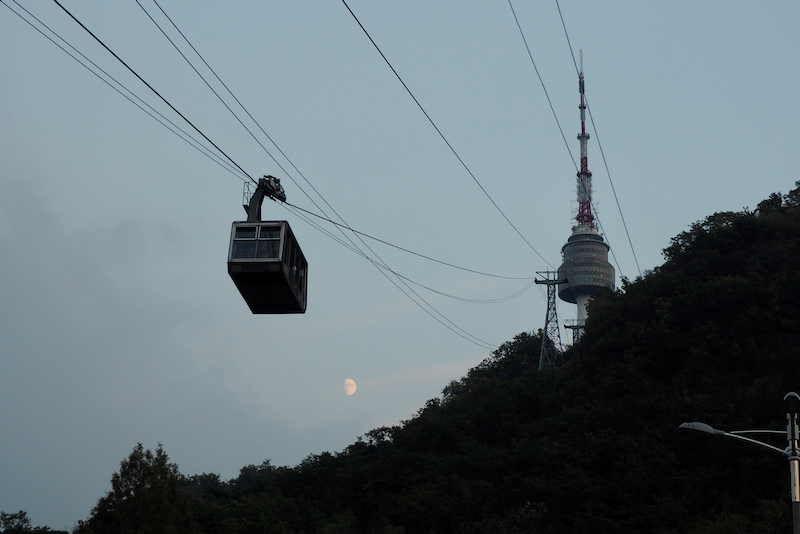Wed., 10/5 - Oeam Village - A Day in the Life…
Today's tour was to Oeam Village, about a two-hour coach ride south of Seoul. Oeam Village is described as a traditional village of the Joseon period.
Oeam (pronounced Way Um) is a folk village that 500 years ago was a horse station. Riders could rest or swap horses here and stay in the village overnight. The village is on the UNESCO Historic Site waiting list. The old houses have either thatched roofs - for the common folk - or tile roofs for the elite. The thatch is made from rice stems.
In the village, we walked past lily ponds and rice paddies; looked at a clan’s burial mound; saw many persimmon trees with ripe fruit; a 600-year-old zelkova tree; gardens with sesame, sweet potato, melons, Japanese eggplant, and garlic plots. The gardens are used by the 70 people (mostly retirees) who live in the village.
Seoul skyline
This stairway led from the top of the hill down to the edge of the highway. Seems a rather strange place for stairs and we saw several like this.
Green houses - from the bus
Elevated railway tracks
Large shopping mall
Family cemetery on a hillside
Sign announcing Oeam Village
Old mill entrance
Male and female tree totems
Some of the lovely trees in the village
Lily pond
Persimmon tree and fruit
Thatched roof - these are replaced every year
Tile roof
600-year-old Zelkova tree
Rice straw - used to thatch the roofs
Morning glories
Kimchi pots - used to hold kimchi, soy bean paste, red pepper paste, and other foods that require air to ferment, which the clay — made from Korean rain water, plants, and mountain soil — provides.
Eggplant
Stepping stones made from old millstones. The ones with a hole in the middle are referred to as female. The others have the hole off-center. When the holes are lined up and the top one rotated, the rice grain was ground.
Baskets and pots used for producing foods.
The group entered one house that was probably 200 years old and has been lived in by 14 generations. The “house” was really a compound of old buildings. For a “learning and discovery” experience (an OAT favorite activity), we sat outside and made a spicy paste (gochujang) from chilies and stuff that the villagers grow. They store things like this paste, and soy mush in pots - Kimchi - with lids. We got to keep the paste we stirred and must let it sit unrefrigerated for 100 days before using it.
Getting instructions
The ingredients
Chick peas for gochujang
Mixing it up
Adding something that is probably spicy hot
A wishing well - a pile of stones to which you add a stone and make a wish as you walk by.
Grinding stone
Vegetable garden
A high governor’s house built, in 1904. The sign was given to the owner by the king - therefore, the house is known as the “king’s house.”
The current owner had us sample lotus blossom liquor - “neon yup ju” (ju means liquor). It is 14% alcohol that the wife of the first son is to make 8 times a year for use at the traditional 8 ritual celebrations. The stuff ferments for 10 to 15 days and is distilled. His granddaughter makes 20 liters at a time.
The village odong tree. If a phoenix lands in the tree, something auspicious will happen.
Insect on a flower - another photography favorite subject - you will see a number of these throughout
Rice paddy
Rice plants
After the tour, lunch was at a restaurant in the village where we had to sit on the platform at a one foot high table to eat a variety of spicy greens, rice, shrimp, and bean soup. (Gale had a ham sandwich and a chicken wrap brought from Seoul!)
The drive back to Seoul took us past rice fields and many fields with greenhouses. There are many towns with very tall high-rise apartment buildings.
Back in Seoul, EJ (the local OAT rep) went with us to see the view of Seoul from the Seoul Tower. The tower is on a mountain top directly behind our hotel. The street/alley leading up the hill has the tower logo painted in the middle of the street. It was impossible to get lost.
There were a lot of steps up to the cable car station platform and many more to get up to the plateau on which the telecommunications tower was built. The area is festive with flowers and "lovers' locks" and great views of Seoul.
Seoul Tower
So you don't get lost
The Namsan cable car
Cute greeter
Locks, locks, and more locks
This still wasn't nearly all of them
In case you wondered where you were
Telecommunications gear on the top of the tower
Looking down at our hotel
In the distance, the Blue House - former home of the president
Wonderful views
The sun was setting fast
Couldn't resist a photo of the airplane approaching the Seoul airport
Caught between the buildings
A "we were there" photo
Lots of lovely flowers
Traffic below as seen on the cable car ride down
Header house
Cable car, the moon, and the Seoul Tower
| Return to Top | Return to Itinerary | Return to Trips page to view other trips | Return to Dreamcatcher Home Page |
